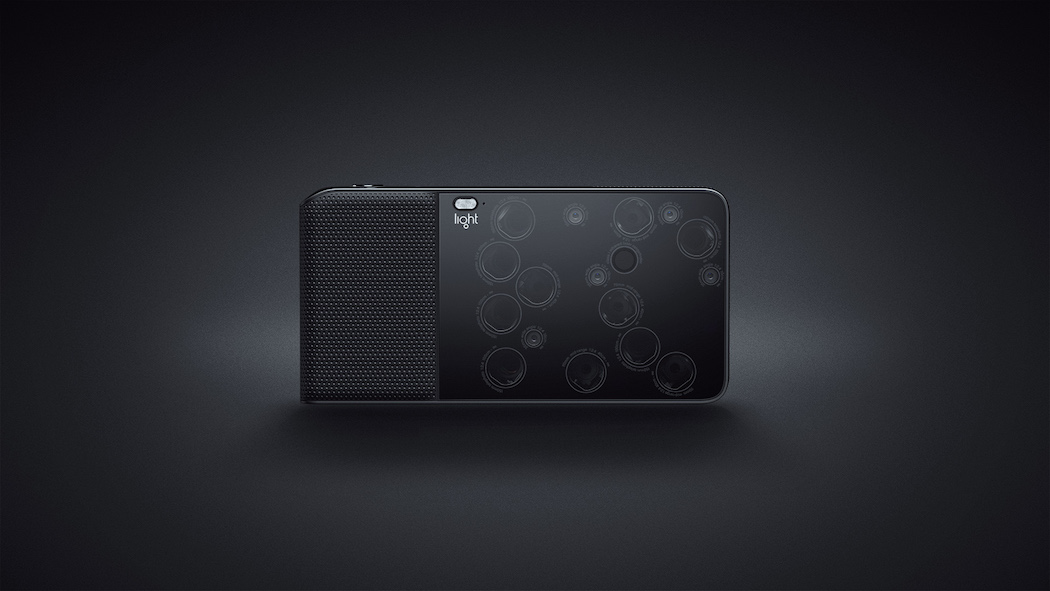Light L16 now boasts of a whopping 16 lenses in one package

Here is the world’s first multi-aperture camera Light L16, which uses computation and a breakthrough optics design for delivering the best imaging engine till now, rendering the control of a DSLR. With 16 individual cameras, one can get 10 cameras firing simultaneously and capture the detail of any shot with the help of multiple fixed focal lengths. These images can be computationally fused to create high-quality final images that boast of 52-megapixel resolution.
The startup Light launched the new L16 at the Code/Mobile conference and named it so, because of its 16 individual lenses. The size of the camera is just like that of a Nexus 6 but the thickness is double than that of the smartphone. With the camera, more data is captured in every shot. The photo’s depth of field setting, focus and exposure can be altered even after it’s been captured.
The L16 salient features
The camera runs on Android and includes built-in WiFi so that you can post pictures from the device right into any of the social channels. It also includes an integrated 35mm-150mm optical zoom that can capture precision and detail like that of an average DSLR. It also features a five-inch touchscreen displa. One might not be able to save on money buying this instead of a DSLR, but it will certainly bring all lenses in one package to deliver high-end quality with every photo.
- Light L16’s lenses shoot at diverse focal lengths right from 35mm prime lens to 150mm telephoto lens
- It manages to capture fine details from every scene delivering high resolution images
- It is described as a ‘silent revolution’ in the field photography by the makers.
Differences from the Major DSLR Cameras
Canon, Nikon, Sony, Fujifilm and many other camera makers are always trying to grab the attention of camera lovers by launching cameras with different lenses that range from the very basic to the very advanced. The pro users can take clicks on manual mode too setting the aperture, focal length, shutter speed and exposure to click the perfect picture.
But with the Light L16, there is no need to buy separate lens for different uses. Each lens helps in capturing photos of a particular distance and with varying depth of field. With the L16, 10 lenses work simultaneously to deliver the perfect picture. The user can change the image’s depth, focus and exposure easily later on with the new Light’s camera and share the same through social media via built-in Wi-Fi too.
How is it possible?
- According to reports from ReCode, the need for assembling better-quality cameras in smartphones has helped in miniaturising camera components thus creating high-quality plastic lenses that can deliver mind-boggling results.
- The Light L16 is the first multi-aperture camera that can deliver DSLR quality and capability. A major advantage with the camera is that it is smaller than the average DSLR, less expensive, and provides great image quality than any other camera in its price class.
The Relevance of Light L16 in present times
The smartphone is now working as the world’s most popular camera, and has left the point-and-shoots in oblivion while DSLRs are quickly getting out of competition and favor quickly. Mirrorless cameras are now fighting a rearguard action. With a smartphone-sized camera, L16 can work for the camera market just like the The DxO ONE is augmenting an iPhone with a splendid 1-inch-format sensor camera. The DxO camera is producing 20MP images at a price point of $600, but the L16 is bringing lots of options to the fore with a heavier price tag.
Verdict
The sample images from Light L16 are gorgeous to say the least and stands favourably with competitors Foveon, Lytro, and Pelican. But great specifications do not equate market success always. It is highly priced at $1,299 on pre-order from today while one would have to shell out $1,699 to get one after 2016 when it launches.

Nisarg is the Business Development Manager at Nimblechapps, a top mobile game development company and has been with the organisation since its inception in 2014. He likes to update his knowledge on changing trends in technology and marketing and pens his thoughts regarding the same on various blogs and LinkedIn.




